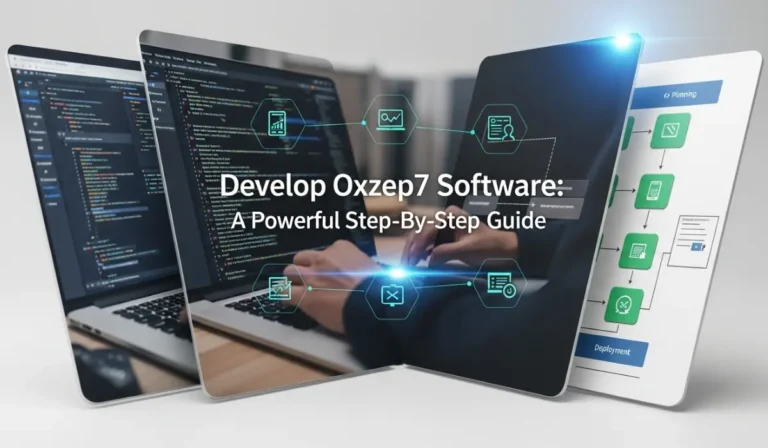
In a digital era where buzzwords fly fast and innovations vanish just as quickly, the term Cbybxrf emerges not with loud fanfare, but as a quiet contender in shaping how systems, interfaces and data interact. What exactly is Cbybxrf? Why is it being called the hidden star of digital innovation? And how might it impact your work, your tools or your worldview of digital spaces? In this article, I’ll guide you through Cbybxrf: its origins, meaning, architecture, applications, benefits, limitations and what it might mean for the future.
Cbybxrf
At its core, Cbybxrf is an abstract concept or framework that blends innovative digital structure, adaptive logic and modular connectivity. Few mainstream platforms use the term precisely, but recent analyses headline Cbybxrf as a “layered architecture for evolving digital systems”.
Here are some of the defining characteristics attributed to Cbybxrf:
-
Non-linear structures: Instead of rigid, step-by-step workflows, Cbybxrf supports multi-point, simultaneous interactions.
-
Obfuscation and adaptive visibility: The system can progressively reveal or conceal layers depending on user behaviour or context.
-
Evolving syntax & self-validation: Frameworks built on Cbybxrf claim to adapt over time, learning from prior iterations.
-
Abstract identifiers & digital identities: As one write-up notes, Cbybxrf-style strings (like “cbybxrf”) are being used as unique digital handles, brand identifiers, or system-codes.
So when we say “Cbybxrf”, we’re not referring to a traditional software package, but rather a class of digital architecture and logic that’s emerging—quietly but steadily—as a potential game-changer. It’s this subtle potential that helps explain the tag “hidden star of digital innovation”.
Cbybxrf – Why It Matters Now
You might ask: in an environment already crowded with frameworks, platforms and systems, why does Cbybxrf stand out? Several shifts in digital trends underline the relevance of Cbybxrf:
The Evolving Nature of Digital Spaces
Networking, systems and apps are no longer linear. Users, devices and data points are connected in webs, loops, and dynamic flows. Cbybxrf’s multi-point architecture aligns well with this complexity.
Demand for Adaptable Systems
As businesses scale, traditional static architectures often struggle with change. Cbybxrf’s promise of evolving syntax and self-validating modules speaks directly to adaptability.
Unique Digital Identity & Visibility
In a sea of usernames, identifiers and domains, something distinct stands out. Some articles highlight “cbybxrf” as an abstract brand or handle with uniqueness, SEO value and cross-platform memory.
Increased Focus on Data Integrity and Autonomy
With privacy, data ownership and decentralized systems gaining traction, Cbybxrf’s reference to self-validation, adaptive transparency and layered visibility becomes more meaningful.
Together, these forces suggest that Cbybxrf isn’t just a clever term—it addresses real pain points in how digital structures evolve, how identities operate and how systems adapt.
Cbybxrf – How It Works: Key Features & Underlying Principles
Though concrete implementations may vary, understanding the core principles of Cbybxrf will help you see how it could impact systems.
Modular Architecture & Layered Logic
Systems inspired by Cbybxrf are composed of discrete, modular layers or nodes. These nodes can be activated, deactivated or modified depending on context. The layered logic means the system doesn’t have to shift monolithically—it adapts piece by piece.
Adaptive Syntax and Behaviour
Unlike rigid frameworks, Cbybxrf-type systems may monitor usage patterns, feedback loops and user behaviour to adjust their internal logic—routing, permissions, visibility etc. This means the system evolves rather than stays static.
Obfuscated & Selective Visibility
One of the more intriguing features: Cbybxrf frameworks may hide or reveal layers based on user roles, context or system state. Instead of “everything visible once you log in”, the display adapts dynamically.
Identity & Naming Benefits
In the digital identity space, adopting unique identifiers like “cbybxrf” can confer advantages: low competition for search, memorable handle, cross-platform consistency.
Integration & Autonomy
Systems built on Cbybxrf logic emphasise autonomy—self-validation, fewer external dependencies, internal checks. This means fewer bottlenecks and more decentralised control.
When combined, these features give Cbybxrf its distinctive posture: not just another framework, but a philosophy of digital architecture for the future.
Cbybxrf – Use Cases & Practical Applications
Let’s ground this concept in real-world or near-future applications where Cbybxrf logic shows promise.
Digital Identity & Branding
For individuals or organisations trying to build a standout digital presence, using abstract identifiers (like “cbybxrf”) can be strategic. It reduces competition, improves visibility and fosters recall. One article emphasised this in the context of health/community brands.
Decentralised Governance & DAOs
In distributed autonomous organisations (DAOs), consensus mechanisms and governance layers need to adapt, handle multiple nodes, and validate internally. Cbybxrf-inspired logic may enable these systems to function more fluidly.
Secure Communication & Privacy Systems
Platforms that need dynamic encryption, evolving keys, role-based visibility benefit from Cbybxrf attributes (adaptive syntax, obfuscation layers). This makes communications more resilient to interception.
Creative Ownership & Digital Assets
In digital arts, music, NFTs or creative content, embedding smart contracts, watermarking, rights validation via self-executing nodes is possible under Cbybxrf-style architectures. These systems can adjust based on usage, remixing, rights transfers.
Workflow & Collaboration Tools
Traditional project management systems are beginning to show their age. With Cbybxrf-inspired frameworks, workflow can happen not just linearly but dynamically: multiple streams, cross-team triggers, adaptive roles. One reputed article described Cbybxrf as a productivity platform.
Each of these cases highlights how Cbybxrf isn’t a one-size-fits-all tool but rather a structural approach, enabling new types of systems to emerge.
Strengths of Cbybxrf
When assessing Cbybxrf’s potential, here are some of the key advantages:
-
Uniqueness & low competition: In identity/branding, the abstract identifier reduces noise and boosts searchability.
-
Adaptable systems: The architecture allows for change without full rebuilds, which supports evolving organisations.
-
Dynamic visibility: Systems can tailor what users see, improving experience, privacy and focus.
-
Resilience & autonomy: Self-validation and internal logic reduce reliance on brittle external systems.
-
Scalable across contexts: From identities to workflows to governance models, Cbybxrf logic applies broadly.
These strengths position Cbybxrf as more than theoretical—rather a structure that meets current digital demands.
Limitations & Considerations
However, no technological paradigm is perfect. Cbybxrf has its share of caveats:
-
Abstractness and learning curve: Because Cby-bxrf represents a newer, less well-documented approach, teams must invest time to understand and implement it meaningfully.
-
Risk of misuse: Systems that adjust their logic or visibility dynamically can pose ethical and security risks—if the internal logic is poorly designed or unchecked.
-
Integration challenges: Existing tools and systems may not align neatly with Cbybxrf logic—migration may require work.
-
Lack of widespread case studies: As a hidden star, Cbybxrf lacks the extensive adoption history or case study depth of more mature platforms.
-
Over-hype danger: Abstract identifiers and frameworks risk being over-promised—real-world benefits may vary significantly.
Awareness of these limitations allows organisations to approach Cby-bxrf strategically rather than with blind optimism.
How to Explore & Implement Cbybxrf
If you’re curious about adopting Cby-bxrf logic—or simply integrating its principles into your digital strategy—here’s a practical roadmap:
-
Identify the scope: Are you using Cbybxrf for identity (branding), workflow (systems), or governance (architecture)? Clarify the purpose.
-
Map current architecture: Understand your current systems: data flows, user journeys, visibility layers. Identify pain points that Cby-bxrf logic might solve.
-
Prototype a module: Start small. Implement one module using lighter Cbybxrf logic (eg: adaptive visibility in a team portal, or an abstract identifier for a brand).
-
Measure outcomes: Define metrics (user recall of identifier, system latency reduction, fewer tool integrations) and track before/after.
-
Iterate: Use the modular nature of Cbybxrf to expand, refine and adapt. Add layers gradually rather than a full overhaul.
-
Train stakeholders: Because the architecture may differ from traditional models, users and administrators need context, guidelines and support.
-
Monitor and govern: Adaptiveness brings power—and risk. Set up oversight, ethical guidelines and transparency for internal logic/visibility decisions.
-
Build brand identity: If using Cby-bxrf for naming/branding, secure consistent identifiers across platforms (social media, domains). Abstract names like “cbybxrf” give you space to build distinct identity.
-
Stay updated: Since Cby-bxrf is evolving, keep an eye on emerging frameworks, tools, case studies and community practices around it.
-
Balance novelty and usability: Don’t sacrifice usability for novelty. Ensure that abstract identifiers remain user-friendly and systems remain accessible even if built on Cby-bxrf logic.
This roadmap empowers you to engage with Cby-bxrf thoughtfully and effectively.
What the Future Could Look Like With Cbybxrf
When we project ahead, the presence of Cby-bxrf logic may shape digital spaces in interesting ways:
-
Digital identities become more distinct and brandable, with minimal overlap and strong recall (thanks to abstract identifiers).
-
Systems transition from rigid hierarchies to adaptive networks, enabling workflows that self-tune based on behaviour.
-
Governance models decentralise further, with internal logic making real-time decisions across nodes without centralised bottlenecks.
-
Creators and platforms embed dynamic rights and ownership rules, granting smarter license enforcement, adaptive content delivery and evolving user experience.
-
Users expect digital spaces that feel tailored, alive and responsive, not simply static pages or rigid apps. Cby-bxrf-style architectures can deliver that ambition.
In short, Cby-bxrf might help move from the age of “one-app-fits-all” to an era of living systems, identity clarity and adaptive digital spaces.
Final Thoughts
Cby-bxrf may not yet be a household term—but for those in the know, it’s more than a curious string of letters. It represents a shift in how we think about identity, workflow, architecture and digital space. By embracing adaptability, uniqueness and layered logic, Cby-bxrf offers a path toward systems that are more human-centric, efficient and future-proof.
If you are building a team environment, a brand identity, a digital product or a governance model—and you are frustrated by tool sprawl, identity conflict, or rigid systems—then exploring Cbybxrf’s logic might just give you a fresh vantage. The hidden star of digital innovation isn’t loud—it evolves, adapts and supports depth.






